Today’s Crimson Software 16.6.1 beta hotfix driver performance analysis charts the performance of 26 games focusing on the Fury X and the 290X compared with Crimson 16.5.3 hotfix drivers which we last tested for our recent SLI vs. CrossFire comparison. You can also compare today’s performance with last month’s Crimson 16.5.2.1 hotfix drivers here. AMD has released their latest June Crimson Software driver on June 5, but it is another Beta Hotfix non-WHQL driver which may give issues for users watching Blu-Ray movies or using other DRM-enabled programs. It has been well over 2 months since AMD has released a WHQL driver.
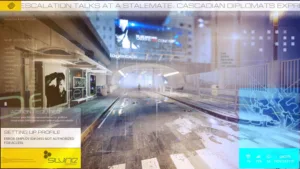 We are also featuring our newest 2016 games, Mirror’s Edge Catalyst and DOOM, and we are also including Ashes of the Singularity, Hitman, and Rise of the Tomb Raider using DX12. We will compare the performance of 26 modern games at 1920×1080, 2560×1440, and at 3840×2160 resolutions with maximum settings. We will also compare Nvidia’s top 3 cards with AMD’s current flagship performance to see if performance or if ranking has changed.
We are also featuring our newest 2016 games, Mirror’s Edge Catalyst and DOOM, and we are also including Ashes of the Singularity, Hitman, and Rise of the Tomb Raider using DX12. We will compare the performance of 26 modern games at 1920×1080, 2560×1440, and at 3840×2160 resolutions with maximum settings. We will also compare Nvidia’s top 3 cards with AMD’s current flagship performance to see if performance or if ranking has changed.
Our testing platform is Windows 10 Home 64-bit, using an Intel Core i7-4790K at 4.00GHz which turbos to 4.4GHz for all cores as set in the motherboard’s BIOS, an ASUS Z97E motherboard, and 16GB of Kingston “Beast” HyperX DDR3 at 2133MHz. The settings and hardware are identical except for the drivers being tested.
BTR’s The Big Picture, once reserved for video card reviews is now included in every driver performance analysis. We want to document the performance changes of our most recent drivers since we last tested them on Windows 10.
At R9 280X or at GTX 970 performance level and above, we test at higher settings and resolutions generally than we test midrange and lower-end cards. All of our games use average and minimum fame rates to test performance at 3 resolutions when the results make sense (generally above 25 fps average), and we use DX11 or DX12 when available and with a very strong emphasis on the latest demanding 2015-2016 AAA games.
Let’s get right to the test configuration, to the driver release notes, and then to the results.
Test Configuration – Hardware
- Intel Core i7-4790K (reference 4.0GHz, HyperThreading and Turbo boost is on to 4.4GHz; DX11 CPU graphics), supplied by Intel.
- ASUS Z97-E motherboard (Intel Z97 chipset, latest BIOS, PCIe 3.0 specification, CrossFire/SLI 8x+8x)
- Kingston 16 GB HyperX Beast DDR3 RAM (2×8 GB, dual-channel at 2133MHz, supplied by Kingston)
- PowerColor R9 Fury X 4GB, at reference clocks.
- VisionTek R9 290X 4GB, reference clocks tested as single GPU, and also in CrossFire; fan set to 100% to prevent throttling.
- PowerColor R9 290X, 4GB, reference clocks, in CrossFire; fan set to 100% to prevent throttling
- GTX 1080, 8GB, Founder’s Edition, reference clocks supplied by Nvidia
- GTX 1070, 8GB Founder’s Edition, reference clocks, supplied by Nvidia
- GeForce GTX 980 Ti, 6GB in SLI and also tested as single GPU, reference clocks, supplied by Nvidia
- EVGA GTX 980 Ti SC, 6GB in SLI and also tested as single GPU, at reference reference clocks, supplied by EVGA
- 2 x GeForce GTX 980, 4GB, reference clocks, in SLI and also tested as single GPU, supplied by Nvidia
- GALAX GTX 970 EXOC 4GB, GALAX factory overclock, supplied by GALAX
- PowerColor R9 280X, 3GB, reference clocks, supplied by PowerColor.
- Two 2TB Toshiba 7200 rpm HDDs
- EVGA 1000G 1000W power supply unit
- Cooler Master 2.0 Seidon, supplied by Cooler Master
- Onboard Realtek Audio
- Genius SP-D150 speakers, supplied by Genius
- Thermaltake Overseer RX-I full tower case, supplied by Thermaltake
- ASUS 12X Blu-ray writer
- Monoprice Crystal Pro 4K
Test Configuration – Software
- The AMD Crimson Software 16.6.1 beta hotfix and 16.5.3 beta hotfix drivers were used for benching the Fury X and the 290X. Other AMD drivers are noted on the Big Picture.
- Nvidia’s GeForce 368.39 WHQL drivers were used to benchmark the GTX 980 Ti, the GTX 1080 and GTX 1070 with other Nvidia divers used in the Big Picture noted on the chart. High Quality, prefer maximum performance, single display.
- VSync is off in the control panel.
- AA enabled as noted in games; all in-game settings are specified with 16xAF always applied
- All results show average frame rates including minimum frame rates shown in italics on the chart next to the averages in smaller font.
- Highest quality sound (stereo) used in all games.
- Windows 10 64-bit Home edition, all DX11 titles were run under DX11 render paths. Our only DX12 title is run under the DX12 render path. Latest DirectX
- All games are patched to their latest versions at time of publication.
- EVGA’s Precision XOC, reviewer’s version 4 used for Nvidia cards.
The 26 PC Game benchmark suite & 1 synthetic test
- Synthetic
- Firestrike – Basic & Extreme
-
DX11* Games
- Crysis 3
- Metro: Last Light Redux (2014)
- GRID: Autosport
- Middle Earth: Shadows of Mordor
- Alien Isolation
- Dragon’s Age: Inquisition
- Dying Light
- Total War: Attila
- Grand Theft Auto V
- ProjectCARS
- the Witcher 3
- Batman: Arkham Origins
- Mad Max
- Fallout 4
- Star Wars Battlefront
- Assassin’s Creed Syndicate
- Just Cause 3
- Rainbow Six Siege
- DiRT Rally
- Far Cry Primal
- Tom Clancy’s The Division
- DOOM (*OpenGL)
- Mirror’s Edge Catalyst
- DX12 Games
- Ashes of the Singularity
- Hitman
- Rise of the Tomb Raider
AMD Settings
Here are the settings that we always use in AMD’s Crimson Control Center for our default benching. They are identical settings to what we used in the older Catalyst Control Center. The new Power Efficiency Toggle which was recently made available for the Fury X and some 300 series cards is left off in our benching. Please note that 100% fan speed is used for benching the 290X reference version, and it does not throttle at all.
Release Notes Highlights for Catalyst 16.6.1 Hotfix Drivers
The release notes and download links for the latest Crimson Catalyst 16.6.1 drivers can be found here for Windows 10. Full release notes can be downloaded here.
Compatible Operating Systems: Windows® 10 64-bit
Included Highlights:
Support for:
- Oculus Rift™ SDK v1.3
- HTC Vive™
Updated Crossfire Profiles available for:
- Hitman™
Let’s head to the chart to compare the driver progress from the 16.5.3 Crimson drivers for Fury X and the 290X to the new Crimson Software 16.6.1 hot-fix driver since we tested them the last time.
The Summary Chart
Here are our results of 26 games and 1 synthetic test. The drivers are noted on the chart. “X” means the benchmark was not run and “NA” means the benchmark could not be run or completed. And an Asterisk (*) means that there are some real issues with the visuals.
All results except for Firestrike are expressed in average fps (in Bold) and also generally in minimum fps (where they make sense, in smaller italics next to the averages). Each set of drivers are compared against the other in the adjoining results column in white (newest 16.6.1 driver) versus black (older 16.5.3 drivers).
As usual, we note mostly incremental improvements with the latest drivers, but this time, they are generally positive on for the Fury X, while the 290X regressed in performance for quite a few games, sometimes noticeably as in Battlefront. Continued negatives included both The Division and Assassin’s Creed Syndicate with Fury X at 4K where memory management still appears to be weak compared with the last WHQL driver. GTA V showed some instability and some stuttering with the latest drivers for both the 290X and the Fury X, but at different resolutions.
Hitman’s performance should not really be compared with the last driver as the latest Chapter 3 brought some minor changes to the benchmark itself.
The Big Picture once reserved for video card reviews has been expanded to feature all of our competing cards on recent drivers.
The Big Picture
Here’s our latest Big Picture including the GTX 1080. We are beginning with the GTX 1080, the GTX 1070, and the GTX 980 Ti versus the Fury X, the TITAN X, the GTX 980 and the GTX 970 EXOC versus the R9 290X and versus the R9 280X. We also show 290X CrossFire and GTX 980 and 980 Ti SLI results. The video cards are tested on the driver sets as shown on the top and bottom lines of the Big Picture.
The highest settings are always chosen and it is DX11 when there is a choice (except for Ashes of the Singularity, Hitman, & Rise of the Tomb Raider which are always run in DX12), and the settings are ultra. Specific in-game settings are listed on the chart.
The benches are run at 1920×1080, 2560×1440, and 3840×2160. All results, except for Firestrike, show average framerates and higher is always better. In-game settings are fully maxed out and they are identically high or ultra across all platforms. “NA” means the game would not run at the settings chosen, and an *asterisk means that there were issues with running the benchmark, usually visual artifacting. “X” means the benchmark was not run at all.
Let’s head for our conclusion.
Conclusion:
Unless you are looking for improved performance for a specific game, we would not necessarily recommend upgrading to the latest Crimson Software Catalyst 16.6.1 hotfix beta driver from any previous Crimson that is working well for you Unlike the recent trend with AMD’s latest driver bringing advantages that are sometimes quite significant, depending on the game you are playing, this driver does not appear to be quite as advantageous, especially for the 290X we tested. However, for several games in our benching suite, Crimson Software 16.6.1 hotfix may bring some improvement for the Fury X over May’s last hotfix drivers. 
Importantly, if you are watching Blu-Ray movies or using other DRM-enabled programs, you definitely want to continue using Crimson 16.3.2 WHQL driver which was released at the end of March and avoid using these drivers.
Stay tuned, next up we are planning a Skylake i7-6770K versus Devil’s Canyon i7-4790K performance comparison with our regular 25 game benchmark suite..
Happy gaming!
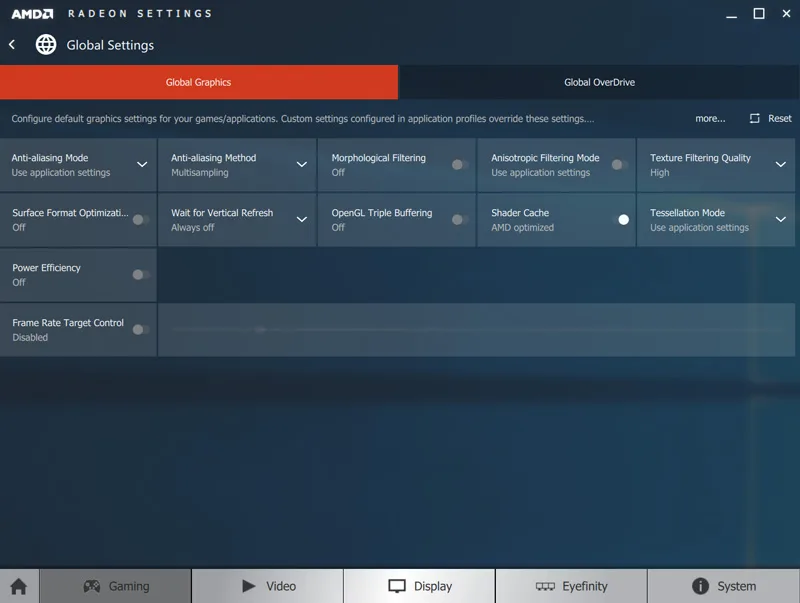
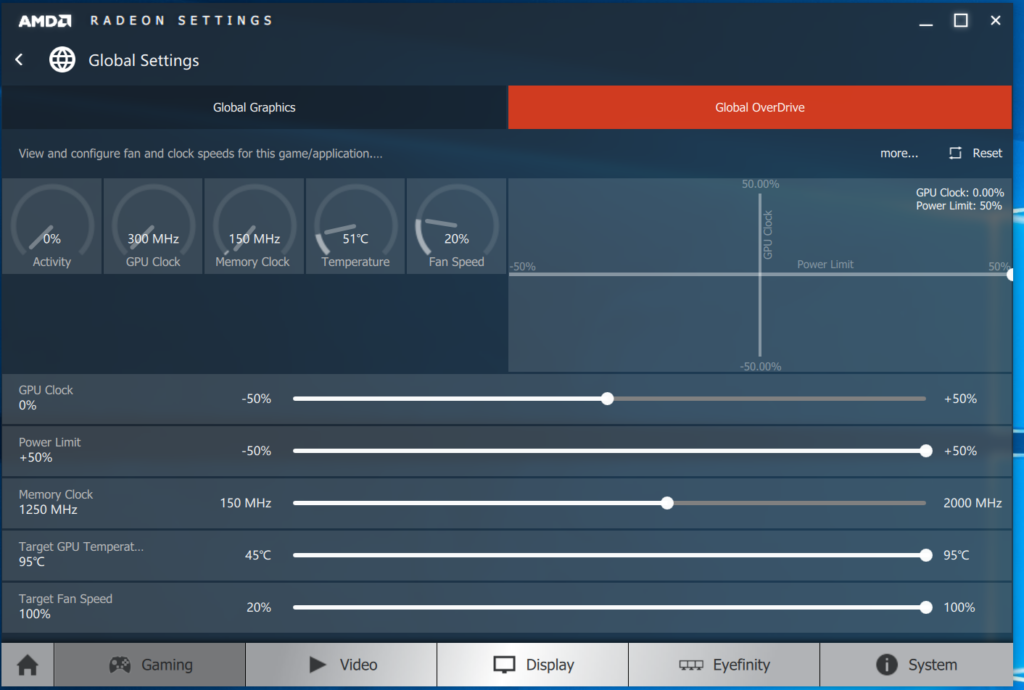
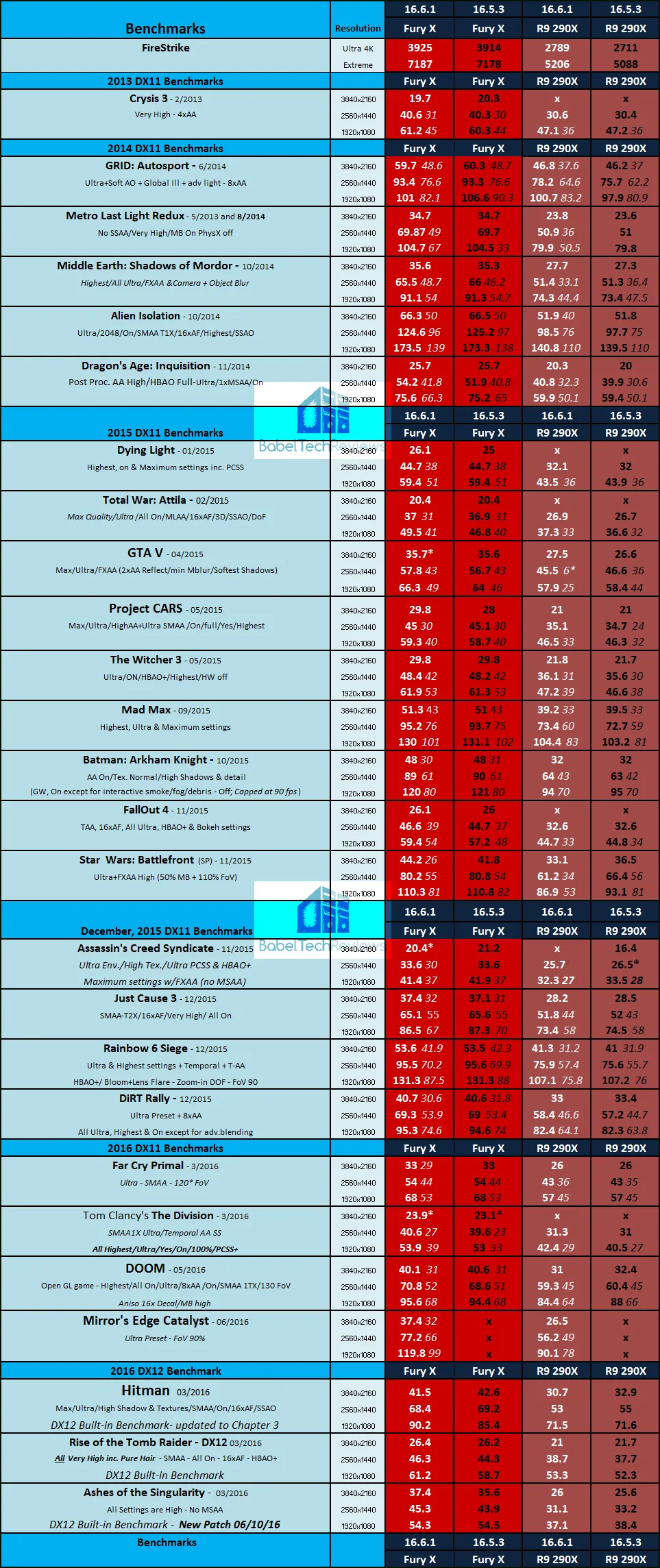
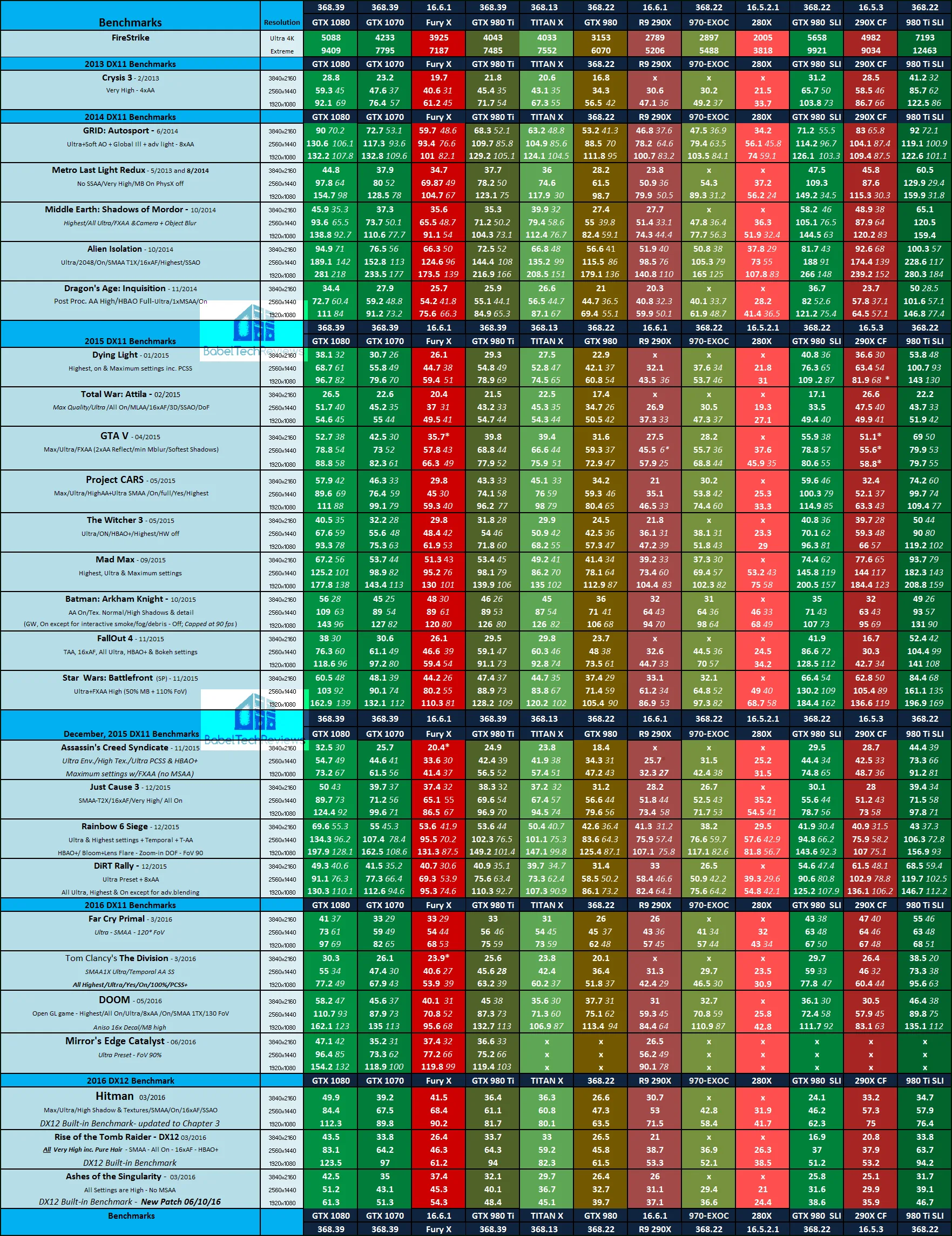
Comments are closed.